No products in the cart.

In April 1963, Emir Muhammadu Sanusi of Kano flouted the First Law of Power and was deposed by the Sardauna of Sokoto and Premier of the Northern Region, Sir Ahmadu Bello. The Emir had outshined the Master.
Sanusi was served his deposition letter by the Governor of the Northern Region, Sir Kashim Ibrahim and was banished to Azare, the capital of the Katagum Emirate in present-day Bauchi State. Emir Muhammadu Sanusi would spend the next 21 years of his life in exile.
In this article, we shall take a look at how Emir Sanusi of Kano flouted the First Law Power which eventually led to his deposition and banishment in April 1963.
Contents
The First Law of Power
In his book, the 48 Laws of Power, American author, Robert Greene, titled the First Law of Power as Never Outshine the Master.
Greene says that, in a desire to please or impress those above oneself, one should not go too far in displaying their talents or they might accomplish the opposite – that is, a sense of fear and insecurity.

Greene further states that you should make your masters appear more brilliant than you are and, in that way, you will attain the heights of power.
However, Emir Muhammadu Sanusi of Kano failed to apply this law. He attempted to outshine his master, Sir Ahmadu Bello, the Sardauna of Sokoto and the Premier of the Northern Region, and he paid dearly for it.
Now, let us take a look at the full story…
The Kano Emirate
The Kano Emirate was formerly known as the Sultanate of Kano. The system would experience a series of changes following the Usman Dan Fodio-led Fulani Jihad of 1804 to 1808.
Dan Fodio conquered many cities and kingdoms, of which the Kano Emirate was one. Kano was the most regarded of all the Emirates at the time as it was the most economically advanced of the conquered Hausa kingdom.
The Emirate has a head called the “Emir.” The Emir is appointed by the Governor and together with the Emirate Council, takes up the rein of the leadership of the Emirate. The Emir has a cabinet which consisted of the Waziri (prime minister), the Galadima (the one in charge of the capital), the Madawaki (the commander of the army), the Dogari (the police head), the Marji (the one in charge of the treasury), and the three Sarkins – the Sarkin Fada (in charge of welfare), the Sarkin Pawa (head of butchers) and the Sarkin Ruwa (head of the fishermen).
The Kano Emirate is home to many Hausa Muslims all over the world, numbering about a hundred million. It is the custodian of the culture and religion of the people of Kano. It is also home to the largest procession of colourful horses in the world.
Sir Ahmadu Bello
Ahmadu Bello was born on June 12, 1910, in Rabbah, Sokoto State. His father was a district head and heir to the Sokoto Emirate. Having schooled at the feet of Muslim scholars, studying the Quran, the hadith and the Sharia law, he proceeded to the Sokoto Middle School for his formal education. Afterwards, he enrolled in the Katsina Teachers’ Training College where he was for five years.
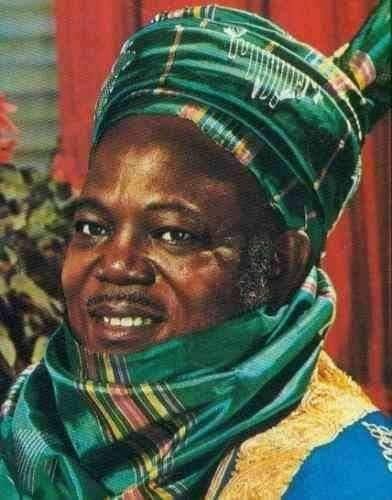
His zeal for politics saw him accept a scholarship in 1948 to study local government administration in England. After his return to the country, he was elected a member of the house of assembly, representing the Sokoto Province.
He helped establish the Jammiyyar Mutanen Arewa, which eventually became the Northern People’s Congress in 1951. Bello would go on to become the head of the party and also the minister of local government, works and community development.
In 1954, Ahmadu Bello became the first Premier of Northern Nigeria. He envisaged a life of bliss and dominance for the people of the North, hence, his decision to remain as Premier of the Region, even after Independence.
Even as a politician, Bello never sought leadership over all of Nigeria. He was content in his role as Premier of the Northern Region.
Sir Ahmadu Bello strongly believed that his position as the Premier of the Northern Region was the most powerful position, even more powerful than the Prime Minister or any traditional ruler in Northern Nigeria. This belief would serve as one of the reasons for his dethronement of Muhammadu Sanusi I, the 11th Emir of Kano in April 1963.
Emir Muhammadu Sanusi I of Kano
Muhammadu Sanusi I was born in Kano to the large family of Abdullahi Bayero, who was the Emir of Kano, at the time. He attended the Kano Middle School and would be bestowed the title of the Ciroma of Kano.
Sanusi ascended the throne of the Kano Emirate in 1954 after succeeding Abdullahi Bayero, who passed away on December 23, 1953. Before his appointment, he was a Senior Councilor of the Emirate Council. He controlled the administration of the Emirate as the sole native authority for over 10 years.
As Emir, Sanusi was pivotal to the major shift in the elite configuration in the emirate. He was also instrumental in the formation of the Northern People’s Congress (NPC), the dominant party in Northern Nigeria at the time. Sanusi was highly influential and helped garner many groups into the NPC. He was a charismatic and politically sound leader. In fact, he was one of those responsible for the success of the NPC in the 1951 elections.
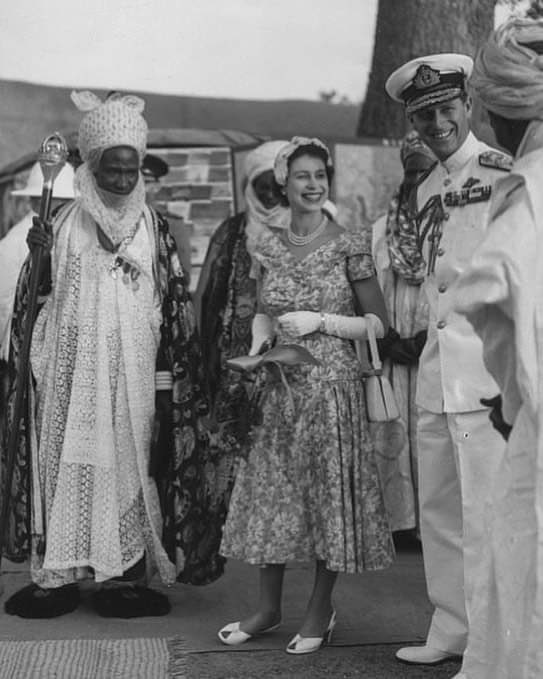
As Ciroma of Kano, Sanusi was known to have his way. His emirate was the most single local administrative unit in the country. As a result of the endowments of his emirate, he was not only powerful, but he was also wealthy. Sanusi was a highly respected leader, not only within the confines of his emirate but also without. He was treated as a first among equals amongst the Emirs of Northern Nigeria, only coming fourth after the Sultan of Sokoto, the Shehu of Borno and the Emir of Gwandu.
During his nine-year reign as Emir of Kano, Muhammadu Sanusi I was powerful. He ruled his emirate with a firm hand and sought the development of his people. He was so influential that he even hosted Queen Elizabeth II of England when she visited Kano in 1956.
Power Play
In 1961, when Sir Gawain Westray Bell, the Governor of the Northern Region, proceeded on leave, Emir Sanusi of Kano acted as Governor in his stead. However, as the Premier of the Northern Region, Sir Ahmadu Bello believed that his position was that of a grand Emir and was superior to all other traditional rulers in the North, including the Sultan of Sokoto.
As a result, from 1962 onwards, Bello embarked on tours to non-Muslim areas of the North and asserted himself much more aggressively in the region.
This, coupled with a string of other events, led to the power play between these two leaders – the Premier of the Northern Region and the Emir of Kano.
Emir Sanusi who once served as the Acting Governor of Northern Nigeria at the time when Sir Gawain Bell went on leave, thought it fit that he should be the substantive Governor of the region after the tenure of the British colonial master expired in 1962. However, Ahmadu Bello chose his close friend, Sir Kashim Ibrahim, and appointed him Governor of the Northern Region with a formal announcement made in London on June 1, 1962, by Buckingham Palace. This appointment made the Emir feel slighted by the Sardauna.
An event which would, however, be pleasing to the Emir was a particular incident that the Sardauna did not find funny and even considered an affront.
This was during a formal occasion at the racecourse. The Emir stole the spotlight by arriving in full splendour and pageantry after the Sardauna had been seated, and the whole assemblage had to stand up for the Emir in traditional homage and honour. The Sardauna would have none of it!

Other events contributed to the conflict between these two leaders.
In 1959, at the celebration of the Northern Region’s internal self-government, the Emir had thought himself worthy to sit in the ‘royal box’ alongside the Sardauna, the Sultan and the Duke and Duchess of Gloucester, Prince Henry, and Princess Alice, who were on a tour of Eastern Nigeria, the Southern Cameroons and Lagos. Unfortunately, the Emir was told to sit somewhere else.
Another event was the Emir’s opposition to the provincial bill passed by the Sardauna’s government which resulted in the appointment of some House of Assembly members as provincial commissioners who not only enjoyed the rank of ministers in the regional government but were also given official precedence over the Emirs. This would be too much for the Emir to bear as the provincial commissioner for Kano was a Sokoto man – a certain Alhaji Aliyu, Magajin Gari of Sokoto, who happened to be of Sokoto royal slave origin.
To rub salt into the wound, the Premier passed a land tenure law which transferred certain highly lucrative powers of land allocation from the emirates to the regional government. This law affected the purse of the Emir greatly as the Kano Emirate was the hardest hit being the most economically important to the regional government.
Furthermore, the Emir of Kano was the Muqqadam – Leader or High Priest – of the Tijaniyya Tariqa, a highly successful Islamic brotherhood with devoted followers in many parts of Northern Nigeria and an external inspiration in Senegal. The Sardauna, having believed that he was the champion of Islam in the North, thought the leadership of a much more popular Islamic Tariqa by the Emir was a challenge to his authority.
To further worsen the case, one of the sons of Emir Sanusi divorced his wife who was the daughter of the Emir of Gwandu, the Sardauna’s distant cousin.
All these strings of events would culminate in the eventual dethronement and banishment of the Emir.
The Dethronement of Emir Sanusi of Kano
The seething antagonism between the two leaders soon deteriorated to a point of no return. The Sardauna of Sokoto and the Premier of the Northern Region, Sir Ahmadu Bello launched an investigation into the financial affairs of the Kano Emirate. The Emir was accused of misappropriation of funds and embezzlement. However, the crime of an Emir was commonplace in those days and could have been easily swept under the carpet, but the Premier thought to finish off the Emir to humble him.
The administrative board of enquiry, at the instance of Ahmadu Bello, recommended the dethronement of the Emir.
In April 1963, Isa Kaita, who was the Minister of Education at the time, was dispatched to Lagos by the Premier to meet with Prime Minister Sir Abubakar Tafawa Balewa and to inform him of the decision to depose the Emir from the throne.
The Prime Minister and some of the Northern cabinet members with him advised against such action stating that Kano would be on fire. However, Keita told Tafawa Balewa that the mind of the Sardauna was made up and that he didn’t come to Lagos to seek the Prime Minister’s opinion but just to inform him.
Also, Sir Kashim Ibrahim entreated the Premier against carrying out such action as it could blow up with severe consequences for the North for Emir Sanusi of Kano was a man of influence and wealth.
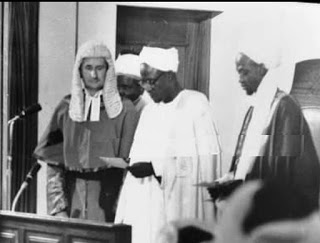
The Sardauna would not budge and he instructed Governor Ibrahim to carry out his constitutional duties as the matter was beyond him and out of his hands.
At once, the Governor invited Emir Sanusi to the Government House in Kaduna, delivered the news to him and brought out a prepared resignation letter for him to sign, which the Emir signed without a word.
Afterwards, Emir Muhammadu Sanusi I of Kano was dethroned and banished to Azare in present-day Bauchi State for nearly 21 years before returning to Wudil, about six kilometres from Kano, where he later died in 1984.
The Aftermath of Emir Sanusi’s Dethronement
As predicted, the Sardauna’s action led to a series of backlash from the Kano people. They refused to accept the actions of the Sokoto man, who did the unthinkable by ousting the Emir of Kano from the throne.
Hence, in April 1963, the people formed a political party – the Kano People’s Party, KPP, with Mallam Bello Abdulkadiri serving as the President while Mallam Ali Wazirichi emerged as the Secretary-General.
In addition, the youth wing of the Northern People’s Congress broke away from the party and formed a new political party – the Northern Youth Movement.
That same year, the KPP formed a coalition with other political bodies, establishing a larger political body – the Northern Progressive Front, NPF.
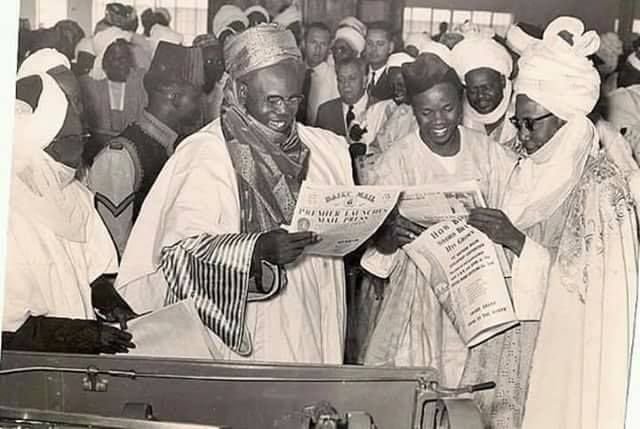
However, the Sardauna had anticipated their moves and put certain measures in place to ensure they failed.
In June 1963, members of the Kano People’s Party were hounded out of jobs. The entire members of the executive of the party were also tried and sentenced to prison for using abusive, and annoying language on the Premier, Sir Ahmadu Bello.
In a final stamp of authority, Muhammadu Inuwa, the dethroned Emir’s uncle, was appointed in April 1963 and installed as the new Emir, but he ruled for only six months until his death on October 8, 1963.
On October 12, 1963, Alhaji Ado Bayero succeeded the late Inuwa as the 13th Emir of Kano. He would go on to rule for 50 years until his death on June 6, 2014. He was 83.
The Sardauna soon retained control over all of the Northern Region and it became obvious that he was the master whose authority would not be challenged and no traditional ruler should outshine if they wanted to retain their positions and privileges.
Reflection
Since the ouster of Emir Aliyu Babba in 1903 by the British, Muhammadu Sanusi I would become the first Emir to be ousted from office and exiled in 1963 after nine years on the throne. While Emir Babba was exiled to Lokoja, Sanusi was exiled to Azare.
Interestingly, his grandson, Sanusi Lamido Sanusi, who became the 14th Emir of Kano in 2014, would suffer the same fate as his grandfather 57 years ago, when he was also dethroned by the Kano State government on March 9, 2020.
Emir Muhammadu Sanusi I failed the First Law of Power and he was hounded and dominated by a much greater force – the Sardauna of Sokoto – Sir Ahmadu Bello – who was also the Premier of the Northern Region. Sanusi was simply caught in the web of political intrigues, tussles and power play. He paid the price for outshining the master.
For the next two-and-a-half years, Sir Ahmadu Bello, the Sardauna and Premier, who appointed and installed two other emirs of Kano, exercised control over the North and was seen as the number one leader, not only in the North but the rest of Nigeria until his gruesome death and assassination during Nigeria’s first military coup on January 15, 1966.
We always have more stories to tell. So, make sure you are subscribed to our YouTube Channel and have pressed the bell button to receive notifications for interesting historical videos. Also, don’t hesitate to follow us on all our social media handles and to as well share this article with your friends.
Feel free to join our YouTube membership to enjoy awesome perks. More details here…
Sources
Abdulaziz, A. (2020). Analysis: History and politics of Sanusi’s dethronement. Premium Times. Retrieved from https://www.premiumtimesng.com/news/headlines/380959-analysis-history-and-politics-of-sanusis-dethronement.html
Franz, A. (2009). Alhaji (Sir) Ahmadu Bello (1910-1966). Blackpast. Retrieved from https://www.blackpast.org/global-african-history/bello-alhaji-sir-ahmadu-1910-1966/
NewsRescue. (2014). Road to Azare: How Emir Sanusi’s grandfather was removed due to ‘jealousy’. NewsRescue. Retrieved from https://newsrescue/road-azare-emir-sanusis-grandafather-removed-due-jealousy
Olatunji, H. (2020). Flashback: How Sanusi’s grandfather was deposed in 1963. The Cable. Retrieved from https://www.thecable.ng/flashback-how-sanusis-grandfather-was-deposed-in-1963/amp
Teniola, E. (2020). How Sanusi’s grandfather was dethroned by Sardauna in 1963. PR Nigeria. Retrieved from https://prnigeria.com/2020/03/09/sanusis-grandfather-dethroned
TheCable. (2020). Ganduje dethroned Sanusi as Emir of Kano. TheCable. Retrieved from https://www.thecable.ng/breaking-sanusi-removed-as-emir-of-kano/amp
Ugbodaga, K. (2020). Analysis: The Sanusis and the bitter tales of dethronement. PM News. Retrieved from https://pmnewsnigeria.com/2020/03/10analysis-the-sanusis-and-the-bitter-tales-of-dethronement
Leave a Reply
You must be logged in to post a comment.

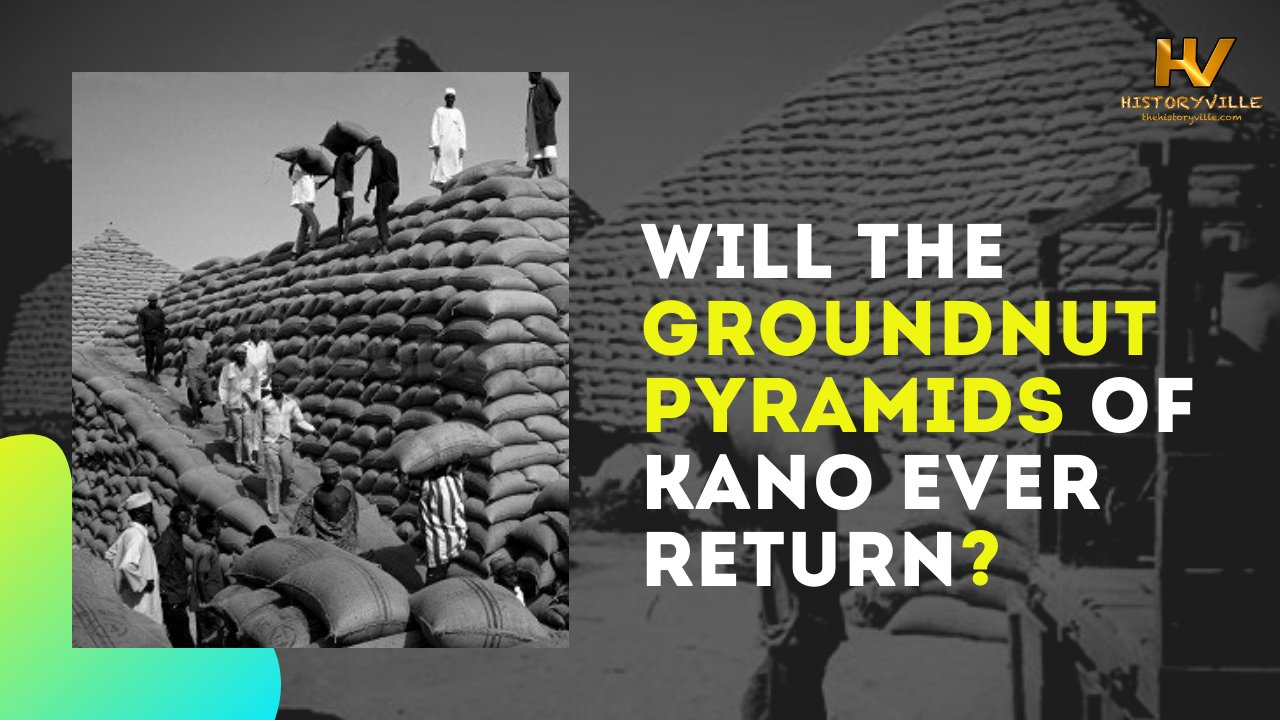
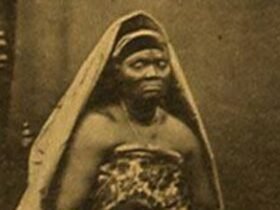
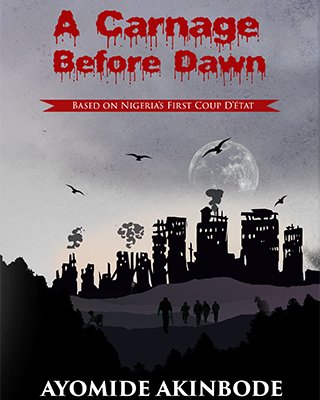

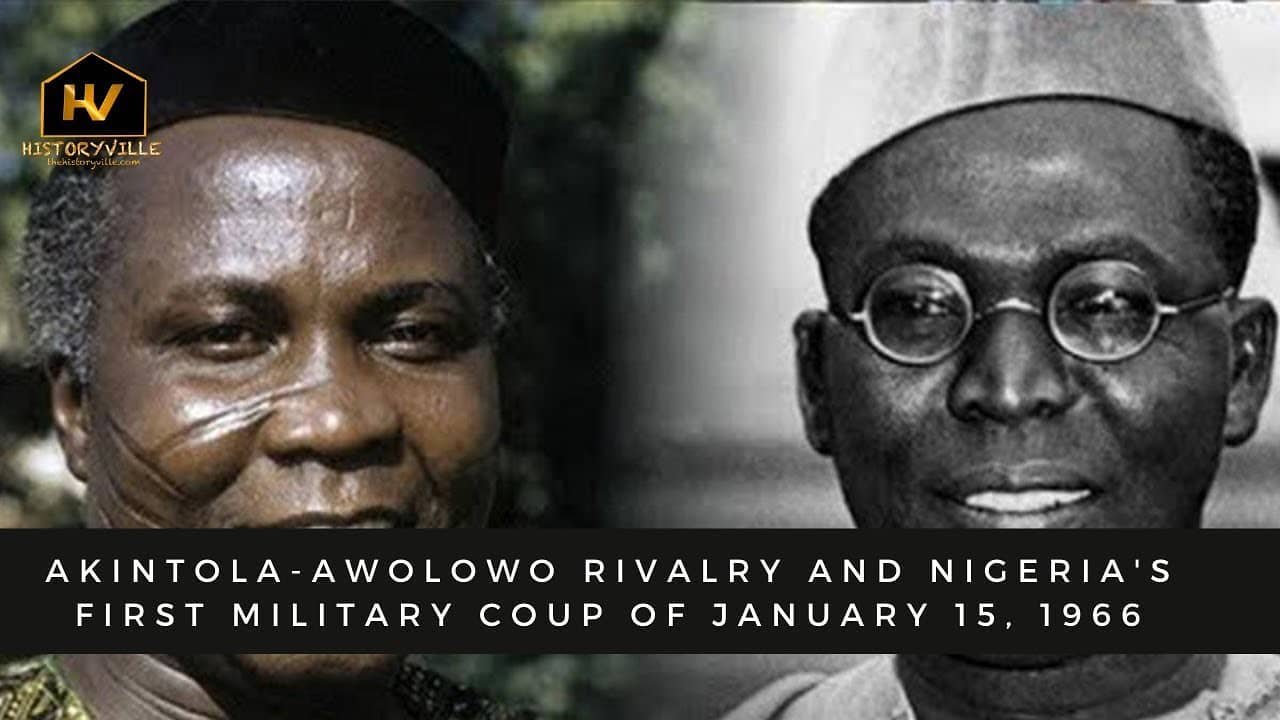

Leave a Reply
View Comments